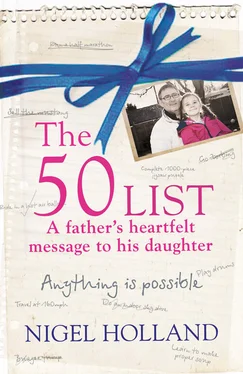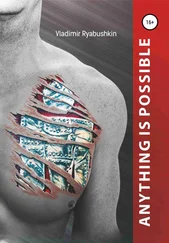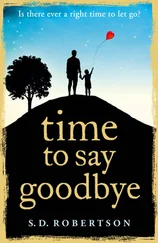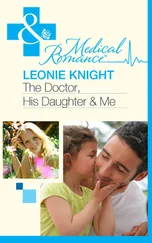Not that my childhood, from that day, was really normal. Though Mum and Dad never allowed me to dwell on whatever it was that was causing my problems (if I became tired after playing, then I rested, but they never stopped me doing anything), it increasingly impacted on my life. This was mostly because life began to be punctuated by interruptions: an endless round of hospital visits, while they tried to better understand what was causing my symptoms. There was obviously no choice but to put up with it all, but hospitals – and everything that seemed to happen within them – soon became the bane of my life. I disliked all of it – in fact, ‘dread’ probably isn’t too strong a word here. What child wants to be in and out of hospital, dragged away from his friends and whatever fun things they might be up to? I particularly hated the seemingly endless in-patient visits to the Hillingdon Hospital and the National Hospital for Neurology and Neurosurgery in Queen Square. Both places soon filled me with anxiety and fear. And much of the reason for that was that I soon learned I couldn’t trust them. They would say one thing – normally a nice, reassuring thing – and then the exact opposite would happen.
A particularly grim time was at the hospital in Queen Square, where, aged seven, I had to have some nerve induction tests. These tests, which I had to have a number of times, involved an electrode being attached to my ankle, and a needle, with a wire attached, put into my thigh. They would then pass a small electric current through the electrode, so that they could assess the strength of the signal in my peripheral nerves by picking up the signal in the wire.
I think I sort of understood why they needed to do it, but what I never got my head around was what they said every time.
‘Now, Nigel, this won’t hurt,’ they’d confidently assure me. ‘All that will happen is that your leg muscle will sort of “jump”.’
Which it duly did. But what I never seemed to be able to get across to them (and how nice it is to be able to make this point here) was that it was my leg, and actually it did hurt!
As I was so young, and an ‘inmate’, which was sort of how it worked back then, the doctors would gather around my bed and talk over me and about me, and, without my parents around to explain what was happening, my only source of information about what horrors might be inflicted next came by way of updates from the nurses after the ward rounds.
‘They’re going to take you to occupational therapy,’ I remember one telling me during one stay, ‘to be assessed,’ she finished mysteriously. It meant absolutely nothing. What on earth was ‘occupational therapy?’ I could hardly pronounce it, and like all the other unpronounceable words they bandied about, I didn’t like the sound of it one bit.
‘What are they going to do to me?’ I wanted to know. ‘Does it involve “tests”?’
‘Tests’ was a word I could pronounce, but I was anxious about them too. Because experience had taught me that tests almost always seemed to involve needles in some way. ‘No, not at all,’ she replied. ‘Really. It’s nothing to worry about, Nigel.’
But her reassurance, helpful though it was, was short-lived. ‘And after that,’ she added quickly (presumably thinking that if she slipped it in I might not notice), ‘they’re going to take you off to have a lumbar punch.’
This was a new one. And one that I definitely didn’t like the sound of. As soon as the nurse elaborated, I was terrified. OK, so it turned out that it didn’t involve being punched by a tree trunk, but what it did involve – in essence, being punctured by an extremely large needle – sounded even more terrifying. A lumbar puncture is when a needle is inserted into your spinal cord and a small amount of spinal fluid drawn off. And as I lay on the bed, curled into a tight ball – knees to chest, as instructed – I was as petrified of that needle as I could be.
‘All over soon,’ the nurse kept saying, patting my head.
‘And you won’t feel a thing,’ the doctor helpfully reassured me, ‘because I’m going to anaesthetize the area first.’ And, to give him his due, on this occasion he was right. Apart from the initial prick – which obviously I did feel – I felt absolutely nothing, and the only bad bit was afterwards when I had to lie on my back for 24 hours, while enduring the worst headache of my young life.
Much worse, in terms of my increasing phobia, was the endless round of blood tests I seemed to have at Hillingdon Hospital, which was staffed by a rogue gang of vampire medics – it must have been, because harvesting my blood seemed to be a favourite pastime. Looking back, I suppose their fascination with looking at it was for a valid reason: I had an extremely rare disease, which they were researching all the time, and I made an excellent guinea pig and pin cushion.
When I was growing up, little was known about CMT. It affects some 23,000 people in the UK and research into it was a vital step in the process of learning how to manage its manifestations. These are many: foot drop, chronic tiredness, bone abnormalities, muscle atrophy, balance issues, loss of dexterity, fatigue and chronic pain. Though I didn’t know all this as a little boy, obviously, I still felt I had to agree to being a guinea pig. Saying no wasn’t an option – not if I wanted to better deal with my disease. The doctors and scientists needed to know about it and, more importantly, so did Mum and Dad.
My poor parents. While as a child I had to deal with its many inconveniences, they had the unenviable task of steering me through a childhood and adolescence knowing that my nerve function would gradually deteriorate and that I’d more than likely end up with a major disability. They had to cope with the knowledge of what might be ahead for me.
But it was hard to be that guinea pig, however much I knew I had to. The medics took blood from me at any opportunity they got, and with every needle they stuck into my arms, my fear grew – so much so that one day it took three nurses and a doctor to hold me down, so that they could get their standard inch of glistening fluid. ‘Well done!’ they’d say. ‘There we are! That didn’t hurt at all, did it?’
Erm, yes. Yes it did hurt. A lot.
And it didn’t just hurt: it became a source of constant anxiety. Like any other child, I loved my parents and wanted to please them. They were trying to make sense of something no one understood, and naturally – and quite rightly – put their trust in the doctors and scientists who were just starting to get to grips with what CMT was. And having me as a real-life case study (either willing or unwilling) was a central part of amassing the vital information that would, everyone hoped, make my life less challenging. So I would never dream of criticizing my parents for the years of investigations I had to go through. They were doing their best for me. They never did anything less than their best for me. Just as Lisa and I want to do our very best for Ellie. Though thank goodness she’s been born into another time.
* * *
The kids duly dispatched to their various places of learning, Lisa and I cleared the kitchen and then headed into Welling-borough, to the church hall where I had my date with destiny.
Apart from the constant nausea, the sweating palms and the gnawing terror, I was actually feeling quite well prepared. I had done my research. I’d often read about the whole ‘confront your fears’ approach to dealing with a phobia, and had been impressed by the case studies of chronic arachnophobics who, after doing just that, had been completely transformed and would let tarantulas skip merrily along their arms. Encouraged, I’d been for a browse on the NHS website, and, having chatted on the phone to a very helpful lady about the process, and having also covered the potential complications of my disability, I had already registered as a first-time donor.
Читать дальше












